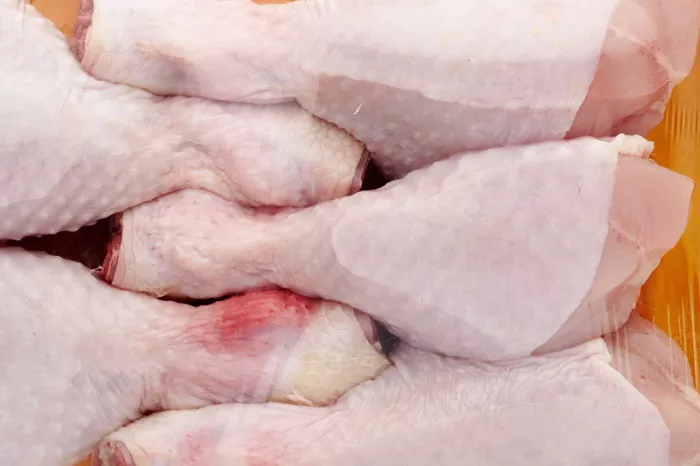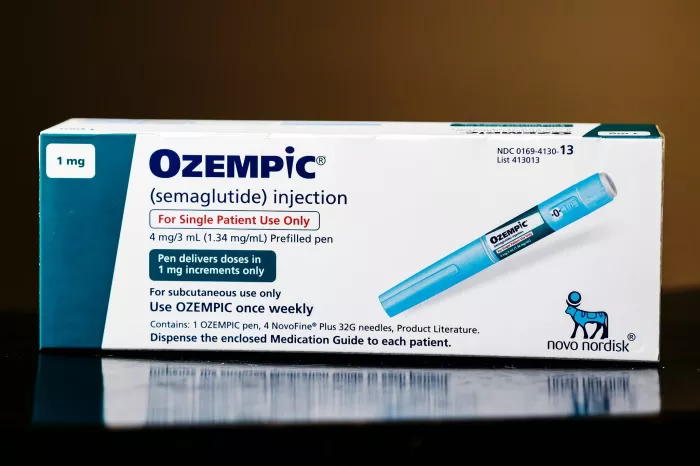In beauty routines or everyday life, our hands are constantly in motion—styling hair, applying products, opening packaging, or handling sharp tools. It only takes one careless moment with a razor, a nail file, or a kitchen knife for a finger to get cut. Most of the time, the bleeding stops quickly and the wound heals with minimal fuss. But what happens when it doesn’t? What if that small cut on your finger just won’t stop bleeding?
At first, it may seem like a minor inconvenience. But persistent bleeding can be a sign of something more serious—whether it’s the location of the cut, how deep it is, or even an underlying health issue. As a beauty expert who believes that healthy skin and self-care go hand-in-hand, I can tell you that knowing how to handle a bleeding cut the right way can prevent complications, reduce scarring, and even save you a trip to the emergency room. This guide will help you recognize when a cut needs more than a bandage and how to treat it properly from the start.
Why Finger Cuts Bleed So Much
Fingers are rich in blood vessels, especially near the surface of the skin. Even a small cut can lead to surprisingly heavy bleeding. That’s because fingers are not only packed with capillaries, but they’re also in constant motion. Every time you flex or use your hand, you may be disrupting the blood clot trying to form. As a result, the cut may reopen repeatedly.
The skin on your fingers is also thinner than in many other parts of the body. Underneath that delicate outer layer lies a network of sensitive nerves and vessels. That’s why a minor finger cut can feel intense and seem like it’s bleeding far more than it really is. While in many cases, it’s nothing to panic about, prolonged bleeding should never be ignored. It could be the result of a deep wound, damaged blood vessels, or even a problem with how your blood clots.
Immediate Steps to Stop the Bleeding
If you’ve just cut your finger and it won’t stop bleeding, the first step is to remain calm. Blood can be unsettling, but panic increases heart rate and blood pressure, which can make the bleeding worse. Start by rinsing the wound gently with clean, cool water. This helps remove dirt and bacteria, reducing the risk of infection.
Next, apply firm pressure with a clean cloth, tissue, or sterile gauze. Elevate your hand above the level of your heart to reduce blood flow to the area. Hold the pressure continuously for 10 to 15 minutes without checking too often. Interrupting the pressure to peek at the wound can prevent a clot from forming. If bleeding slows or stops, you can clean the area gently and cover it with a bandage. If it doesn’t, it’s time to consider other causes.
Avoid using hydrogen peroxide or alcohol on fresh wounds. These can irritate the skin and delay healing. Instead, use mild soap and water. Once the bleeding stops, apply a thin layer of petroleum jelly or antibiotic ointment to keep the area moist and protected.
When to Worry About Continuous Bleeding
Bleeding that continues for more than 15 to 20 minutes despite direct pressure should be taken seriously. A persistent bleed could mean that the cut is deeper than it appears. It may have nicked a vein or artery, or severed tissue that needs sutures to close properly. If blood is spurting out or pulsating with your heartbeat, this may indicate arterial bleeding, which requires emergency care.
Another warning sign is if blood soaks through multiple layers of gauze or bandages. This suggests that the pressure is not strong enough or the injury is more severe than expected. Also, if the area around the cut becomes numb or turns pale or blue, the blood supply to the finger may be compromised.
Pay attention to how the cut looks after the initial bleeding stops. If it opens easily, the wound edges may not be able to stay closed on their own. In this case, medical glue, adhesive strips, or stitches may be needed to help the skin seal. Don’t try to tape it shut yourself if the cut is deep, wide, or jagged.
Could It Be a Clotting Problem?
If your cut is shallow but still refuses to clot, your body’s natural healing process might be impaired. Blood contains platelets and clotting factors that work together to stop bleeding. Certain health conditions or medications can interfere with this system.
People who take blood thinners like warfarin, aspirin, or certain supplements may find that even minor cuts take a long time to stop bleeding. Other medical conditions, such as hemophilia, liver disease, or vitamin K deficiency, can also delay clotting. If you’ve had frequent issues with bleeding, especially from small wounds, it may be worth discussing with your doctor.
Even some common beauty practices, like using facial exfoliants or chemical peels, can thin the skin and make it more prone to injury. While this usually affects facial skin, dry and over-treated cuticles can also crack or bleed unexpectedly. Keeping your hands moisturized and your cuticles cared for can help prevent tiny wounds from escalating.
What to Do If the Cut Is Still Bleeding
If pressure and elevation haven’t worked after 20 minutes, you need to escalate your care. First, try a sterile styptic pencil or styptic powder—these are often used to stop shaving nicks and are available at most pharmacies. They contain aluminum sulfate, which helps constrict blood vessels and stop bleeding quickly. Use them only on minor cuts, not deep wounds.
You can also apply a hemostatic dressing, which is designed to speed up clotting. These are especially useful if you cut yourself while traveling or outdoors and need to stop the bleeding fast. Keep a small kit in your bag or beauty cabinet for emergencies.
If bleeding continues despite these efforts, go to urgent care or the emergency room. Bring information about any medications you’re taking and let the healthcare provider know how long the wound has been bleeding. You may need stitches, medical glue, or even treatment for a deeper underlying issue.
Preventing Finger Cuts in Beauty and Daily Routines
Many finger injuries happen during everyday activities—opening packages, trimming nails, or cleaning tools. In the beauty world, sharp tweezers, razors, and scissors are common culprits. Always handle these tools with care, and keep them properly maintained. Dull blades are more likely to slip and cause injury than sharp ones.
Don’t rush through your skincare or grooming routine. Taking an extra minute to position your hands safely can prevent painful cuts. If your skin is dry or cracked, apply a hand cream or balm before starting any beauty treatments to reduce the risk of breaks in the skin.
When working with chemical products—like hair dye, bleach, or acetone-based removers—wear gloves. These products can weaken the skin’s barrier, making it more vulnerable to cuts. They can also irritate an open wound, making a minor cut feel worse and heal slower.
Cleaning and Caring for the Wound After Bleeding Stops
Once the bleeding has stopped, clean the area again with warm water and a gentle soap. Pat it dry carefully and apply a thin layer of petroleum jelly or a healing ointment to keep the skin moist. Moist wounds heal faster and with less scarring than dry, scabbed ones. Cover the area with a clean bandage to protect it from dirt, bacteria, and friction.
Change the bandage daily or whenever it becomes wet or dirty. Wash your hands before and after touching the wound. If the area becomes red, swollen, or warm over the next few days, this may be a sign of infection. Watch for pus or an unpleasant odor. If any of these symptoms appear, consult a doctor.
Avoid using your injured finger for strenuous tasks while it heals. If you must use it, consider wearing a finger guard or waterproof dressing. This can shield the wound from additional damage and help speed up recovery.
How Long Should a Finger Cut Take to Heal?
A minor finger cut that is properly treated should begin to close within 24 to 48 hours. The pain and tenderness should decrease after a few days, and the wound may completely heal in 7 to 10 days. Deeper or more serious cuts may take longer, especially if stitches or medical glue were used.
Healing times also depend on overall health. People with diabetes, poor circulation, or autoimmune disorders may find that wounds take longer to close. Smoking, stress, and poor nutrition can also delay healing. Stay hydrated, eat a balanced diet, and get plenty of rest to support your body’s natural recovery.
During the healing process, keep the area protected but allow it to breathe occasionally. Once a protective layer of skin forms, you can reduce the use of bandages and begin applying healing creams or scar-reducing treatments as needed.
When to Resume Beauty Routines After a Finger Cut
If the cut was caused during a beauty procedure—such as a manicure—it’s best to hold off on similar treatments until the wound is fully healed. Using nail polish, artificial nails, or cuticle treatments on an open or recent wound can introduce bacteria and slow the healing process.
Once the skin is fully closed, you can return to your usual hand and nail care. Be extra gentle in the first few weeks, and avoid any harsh treatments that could reopen the area. If you’re unsure, consult with a licensed esthetician or dermatologist before resuming treatments.
Consider this healing period a good time to nourish your skin. Use rich hand creams, oils, and gloves at night to restore the skin barrier. Beauty is more than just surface-level—it starts with care, caution, and patience.
Conclusion
A small cut on your finger may not seem like a big deal, but if it won’t stop bleeding, it deserves your full attention. Knowing how to react quickly and effectively can prevent pain, infection, and scarring. Whether you’re doing your nails, organizing your beauty drawer, or slicing fruit in the kitchen, accidents happen—but how you handle them determines the outcome.
Keep a small wound-care kit in your beauty cabinet. Educate yourself on the signs of normal versus abnormal bleeding. And never hesitate to seek medical help when something doesn’t feel right. Beautiful, healthy hands are an important part of your overall look—and caring for them during injury is just as important as polishing them for display.
Related Topics



































